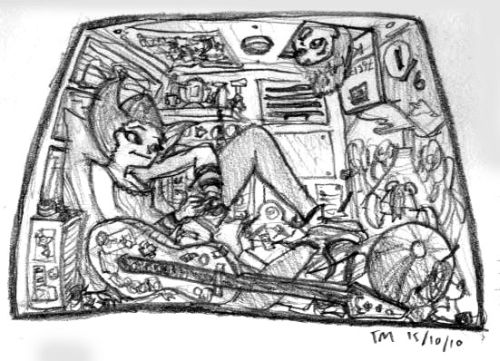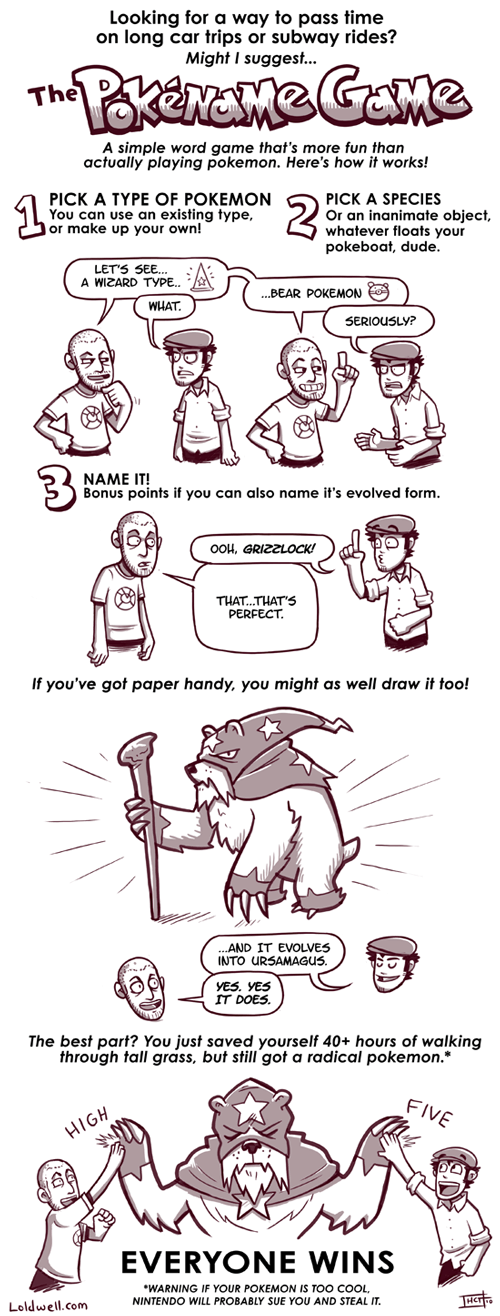Tim Link
I’d like to get better at drawing, and I know the best way to do that is to draw every day. But previous attempts to form this habit always run out of steam. My new plan is to post each drawing on Tumblr, and also to tell people that I am doing so (so you reading this is an integral part of the plan). Even if nobody ever follows that feed, the fact I’ve published it theoretically creates the sense of accountability I need. I’m also very impressed at how good Tumblr is at streamlining the publishing process, and highly recommend it for this kind of endeavour:
Sleep or Draw
(Note: link contains screen-high female manga characters, which depending on your workplace may be considered NSFW)
Link
Despite familiarity with Google Streetview, being presented with random locations on earth by this site does feel strangely magical.
Quote
Observed on Facebook:
Commenter: “People do give a damn but most can’t be assed to show their support”
Profilee: “Well then they don’t give enough of a damn for it to be worth a damn.”
Commenter: “Damn!”
Puzzle
I was fascinated to read an article in the Daily Telegraph which suggested that the fact you can artificially create a stimulus in someone’s brain that will cause them to make a physical movement somehow proved that Free Will does not exist. Whatever you might think about Free Will, it seems pretty clear that being able to get some kind of effect by one method doesn’t exclude the possibility that a different method could still provoke the same effect, so the leap to ruling our Free Will seems premature.
Still, I think there’s an instructive puzzle here: given an arbitrary budget, and any science-fiction technology you care to imagine, how would you devise a test to see if Free Will exists? Feel free to use any definition of Free Will you think might be useful.
Picture
I tested this game (from Loldwell.com) with a friend while stuck on a delayed tube train. I recommend it.
Previous Week’s Puzzles
In Things 82 I asked why street lights weren’t at least partially solar powered, and in Things 83 I gave some guesses. Richard pointed out that since both street lamps and council buildings are already connected to the grid, any effort in this area would be better spent on the latter, where solar panels would be far easier to deploy and maintain.
He also notes that:
The street furniture I’ve seen with solar/wind panels tends to be speeding signs in rural areas, where the sign is only illuminated occasionally, appears to be LEDs, where a connection to the grid might be costly, and where a power failure would not be inconvenient.
Russell points out that the Mars rover proved more resilient to sand build-up than originally expected because the Martian wind did a good job of keeping the panels clean (so bolstering the potential of the solar-powered street lamps I originally linked to); he also links to the appealing prospect of solar-energy-harnessing paint.
Then, in Things 83 I asked why fingers wrinkle in water and the rest of your skin doesn’t. Russell noted that from his diving experience he knew for a fact that your palms will also eventually go wrinkly after an hour or two, and attributed this to surface-area:volume ratio differences.
The internet tells me that the first barrier to the water is the layer of sebum, and only once that is washed away can the water get in and wrinkle the skin. An unknown internet person claims the finger tips have the least sebum, so are first to wrinkle. However, the first link (which sounds pretty authoritative) also claims that “no one is really sure” exactly what drives the wrinkling process, and wikipedia cites a paper which claims sebum “may serve little or no purpose in modern humans,” so it seems as if the whole thing remains somewhat mysterious.
There’s also a deeper question behind these answers: is this wrinkling thing a Bug or a Feature of our skin, or to put it another way, did it evolve for a reason? Being a fan of the (heftily discredited) Aquatic Ape Hypothesis, I like to imagine it’s actually a feature designed to improve grip when we’re in the water, an idea which presumably could be tested with some kind of gripping experiment, which I may at some point try to carry out.

